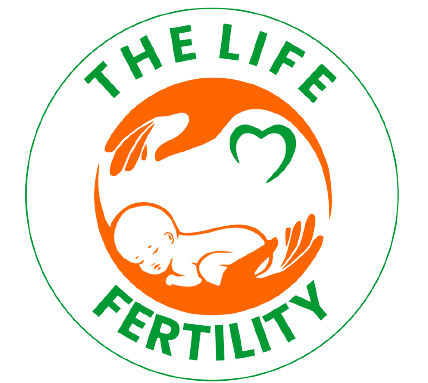Introduction
Secondary infertility is an issue that affects numerous families, bringing with it a unique set of challenges and emotional burdens. Whether you are experiencing unexpected difficulty in conceiving after a previous pregnancy or are looking for answers and solutions, understanding the root causes, recognizing the symptoms, and exploring the treatment options for secondary infertility is crucial.
Unlike primary infertility, secondary infertility can be particularly distressing as it defies the expectations of effortless conception after a successful pregnancy. In this article, we provide a detailed exploration of secondary infertility to help you on your path to parenthood.
Table of Contents
Understanding Secondary Infertility
Secondary infertility is a perplexing and often emotionally challenging condition that affects many couples who have previously experienced a successful pregnancy. Secondary infertility is the inability to conceive or bring a pregnancy to term after having one or more children, as opposed to primary infertility, which occurs when the couple has never conceived.
This condition can be surprising and disheartening, especially for those who had no issues conceiving their first child. By understanding secondary infertility, couples can better navigate the emotional and medical aspects of their journey toward expanding their families.
The Hidden Struggle of Secondary Infertility
The hidden struggle of secondary infertility is a significant yet underrecognized issue. Couples dealing with secondary infertility may encounter particular emotional difficulties, such as feelings of loneliness, bewilderment, and guilt. They often encounter societal assumptions that their ability to have one child guarantees future pregnancies, which can lead to a lack of empathy and support from others.
This struggle is compounded by the pressure to provide a sibling for their existing child. Understanding the emotional toll of secondary infertility is crucial for those affected and for their support networks, highlighting the need for compassionate conversations and resources.
Secondary Infertility: Causes, Symptoms, and Treatments
Exploring the causes, symptoms, and treatments of secondary infertility is essential for couples seeking to overcome this hurdle. Various factors can contribute to secondary infertility, including age, hormonal imbalances, underlying medical conditions, and lifestyle changes since the last pregnancy. Recognizing the symptoms, such as irregular menstrual cycles or unexplained changes in reproductive health, can prompt timely medical consultations.
Treatment options include anything from medication and lifestyle changes to IVF and other cutting-edge reproductive technology. By addressing secondary infertility comprehensively, couples can better understand their situation and explore effective pathways to achieving their dream of growing their family.
What is Secondary Infertility?
Definition and Overview
Secondary infertility is defined as the inability to conceive or carry a pregnancy to term after previously giving birth to one or more children without the use of fertility treatments. This condition can be as challenging and emotionally draining as primary infertility, yet it is often less recognized and understood.
Couples facing secondary infertility may experience confusion and frustration, as their past success with pregnancy does not guarantee future fertility. Understanding the intricacies of secondary infertility is vital for those affected, providing a foundation for seeking appropriate medical advice and support.
Differences Between Primary and Secondary Infertility
While both primary and secondary infertility involve difficulties in achieving a successful pregnancy, they differ in key aspects. Primary infertility refers to couples who have never conceived, whereas secondary infertility occurs in those who have previously had one or more children. This distinction is significant as the emotional and psychological impacts can vary; couples with secondary infertility might face unique pressures and expectations based on their past experiences.
Additionally, the causes of secondary infertility may differ, often involving factors that have changed since the previous pregnancy, such as age, health conditions, or lifestyle factors. Recognizing these differences is crucial in understanding and addressing the specific challenges posed by secondary infertility.
Causes of Secondary Infertility
Medical Conditions
Medical conditions are a significant factor contributing to secondary infertility. Conditions such as polycystic ovary syndrome (PCOS), endometriosis, and uterine fibroids can develop or worsen after a previous pregnancy, impacting fertility. Additionally, male factors like low sperm count or motility can also play a role.
It’s crucial for couples experiencing secondary infertility to undergo thorough medical evaluations to identify and address any underlying conditions that may be hindering their ability to conceive again.
Age-Related Factors
Age-related factors are another critical aspect of secondary infertility. As women age, particularly after the age of 35, their fertility naturally declines due to a decrease in the number and quality of eggs.
Similarly, men may also experience a decline in sperm quality with age. Couples who had their first child at a younger age may find it more challenging to conceive as they get older. Understanding the impact of age on fertility can help couples make informed decisions about their family planning and seek timely medical advice if they encounter difficulties.
Lifestyle and Environmental Factors
Lifestyle and environmental factors can significantly influence secondary infertility. Changes in weight, diet, exercise habits, and stress levels since the last pregnancy can affect fertility.
Additionally, exposure to environmental toxins, such as pesticides, heavy metals, and endocrine-disrupting chemicals, can also impair reproductive health. Couples experiencing secondary infertility should consider evaluating and modifying their lifestyle and environmental exposures to improve their chances of conceiving.
Previous Pregnancy and Delivery Complications
Complications from a previous pregnancy and delivery can contribute to secondary infertility. Issues such as infections, scarring from cesarean sections, or uterine surgeries can affect the reproductive organs and hinder subsequent pregnancies. Furthermore, conditions like preeclampsia or gestational diabetes may have long-term effects on fertility.
It is essential for couples to discuss any previous pregnancy or delivery complications with their healthcare provider to understand their potential impact on current fertility and explore appropriate treatments.
Symptoms of Secondary Infertility
Common Indicators
Secondary infertility often presents with several common indicators that can signal underlying reproductive issues. One of the most noticeable symptoms is the inability to conceive after having previously given birth, despite engaging in regular, unprotected intercourse for at least a year. Irregular menstrual cycles or significant changes in menstrual flow can also be indicative of secondary infertility.
Additionally, symptoms such as pelvic pain, painful periods, or pain during intercourse may suggest conditions like endometriosis or fibroids, which can impact fertility. Couples should be mindful of these signs as they can provide early clues to potential fertility challenges.
When to Seek Medical Advice
Knowing when to seek medical advice is crucial for addressing secondary infertility effectively. If a couple has been trying to conceive for over a year without success, it is advisable to consult a fertility specialist.
However, for women over the age of 35, it is recommended to seek help after six months of trying, given the natural decline in fertility with age. Other red flags that warrant prompt medical consultation include irregular menstrual cycles, a history of miscarriages, or any previous pregnancy complications. Early intervention can help identify and treat the causes of secondary infertility, increasing the chances of a successful pregnancy.
Diagnosing Secondary Infertility
Medical History and Physical Examination
Diagnosing secondary infertility begins with a comprehensive review of the couple’s medical history and a thorough physical examination. During this initial consultation, the healthcare provider will inquire about the couple’s previous pregnancy experiences, menstrual cycles, sexual health, and any changes in health or lifestyle since their last pregnancy.
This detailed medical history helps identify potential factors contributing to secondary infertility, such as previous pregnancy complications, underlying medical conditions, or changes in lifestyle. The physical examination, which may include a pelvic exam for women and a testicular exam for men, can reveal physical abnormalities or signs of conditions like endometriosis or varicocele that might impact fertility.
Diagnostic Tests and Procedures
To further investigate the causes of secondary infertility, a series of diagnostic tests and procedures may be recommended. Common tests for women include hormonal blood tests to assess ovulatory function, imaging tests like ultrasounds to evaluate the reproductive organs, and hysterosalpingography (HSG) to check for blockages or abnormalities in the fallopian tubes and uterus. For men, semen analysis is a standard test to assess sperm count, motility, and morphology.
Additional tests, such as genetic testing or laparoscopy, may be necessary to identify specific issues. These diagnostic procedures provide critical information that helps tailor an effective treatment plan for secondary infertility, increasing the chances of achieving a successful pregnancy.
Treatment Options for Secondary Infertility
Lifestyle Modifications
Lifestyle modifications can play a significant role in addressing secondary infertility. Simple changes such as maintaining a healthy weight, adopting a balanced diet, and engaging in regular physical activity can enhance fertility. Reducing stress through mindfulness practices, yoga, or counseling can also be beneficial, as high-stress levels can negatively impact reproductive health.
Avoiding harmful substances like tobacco, excessive alcohol, and recreational drugs is crucial. By making these positive lifestyle changes, couples may improve their chances of conceiving naturally and create a healthier environment for pregnancy.
Medications and Hormone Treatments
Medications and hormone treatments are often effective in treating secondary infertility, particularly when hormonal imbalances or ovulatory issues are identified. Clomiphene citrate and letrozole are commonly prescribed to stimulate ovulation in women who have irregular cycles or do not ovulate regularly.
For men, medications may be used to address hormonal deficiencies affecting sperm production. Additionally, hormone treatments such as gonadotropins can be administered to enhance fertility in both men and women. These treatments are typically tailored to the individual’s specific needs and monitored closely by a fertility specialist to maximize their effectiveness and minimize potential side effects.
Surgical Interventions
In some cases, surgical interventions may be necessary to treat secondary infertility. Procedures such as laparoscopy or hysteroscopy can be used to diagnose and treat conditions like endometriosis, fibroids, or adhesions that may be hindering fertility. For men, varicocelectomy can improve sperm quality by removing varicose veins in the scrotum.
Surgical interventions aim to correct anatomical abnormalities or remove obstructions, thereby improving the chances of a successful pregnancy. These procedures are usually performed minimally invasively, reducing recovery time and enhancing outcomes for couples struggling with secondary infertility.
Assisted Reproductive Technologies (ART)
Assisted Reproductive Technologies (ART) offer advanced solutions for couples facing secondary infertility. In vitro fertilization (IVF) is the most well-known ART procedure, involving the fertilization of an egg outside the body and the transfer of the resulting embryo into the uterus. Other ART options include intrauterine insemination (IUI), where sperm is directly inserted into the uterus, and intracytoplasmic sperm injection (ICSI), a technique used in conjunction with IVF for severe male infertility.
These technologies provide valuable opportunities for couples to conceive when other treatments have not been successful. By leveraging ART, many couples overcome secondary infertility and achieve their dream of expanding their family.
Emotional and Psychological Impact
Coping Strategies
The emotional and psychological impact of secondary infertility can be profound, often accompanied by feelings of frustration, sadness, and anxiety. Coping strategies are essential for managing these emotions and maintaining mental health. Practicing mindfulness and relaxation techniques, such as meditation, yoga, or deep breathing exercises, can help alleviate stress and promote emotional well-being. Engaging in regular physical activity and pursuing hobbies or activities that bring joy and relaxation can also be beneficial.
It is important for individuals and couples to allow themselves to grieve and process their emotions, understanding that feeling a range of emotions is a normal part of dealing with secondary infertility. Seeking professional counseling or therapy can provide a safe space to explore and address the complex emotions associated with this condition.
Support Systems and Resources
Building and relying on strong support systems and resources is crucial for those experiencing secondary infertility. Connecting with others who understand the unique challenges of secondary infertility, whether through support groups, online communities, or local organizations, can provide invaluable emotional support and a sense of community.
Sharing experiences and advice with others facing similar struggles can help reduce feelings of isolation and provide practical insights. Additionally, seeking guidance from fertility specialists, mental health professionals, and reputable fertility organizations can offer access to information, treatment options, and emotional support.
By leveraging these support systems and resources, individuals and couples can navigate the journey of secondary infertility with greater resilience and hope.
Success Stories and Case Studies
Personal Experiences
Personal experiences of overcoming secondary infertility can be a source of hope and inspiration for many couples. Hearing success stories from others who have faced similar challenges can provide encouragement and valuable insights into the journey of dealing with secondary infertility. For instance, one couple might share their story of how they conceived naturally after making lifestyle changes and seeking acupuncture treatments, highlighting the importance of holistic approaches.
Another story might involve a couple who underwent several rounds of IVF before finally achieving a successful pregnancy, demonstrating the resilience and determination required. These personal experiences emphasize that while the journey through secondary infertility can be arduous, there are various paths to achieving the dream of expanding one’s family.
Expert Insights
Expert insights play a crucial role in understanding and managing secondary infertility. Fertility specialists, reproductive endocrinologists, and mental health professionals offer valuable perspectives on the complexities of this condition. Experts can provide case studies where specific medical interventions led to successful pregnancies, such as the use of hormone treatments to correct ovulatory issues or surgical procedures to address anatomical abnormalities.
Additionally, mental health professionals can offer case studies on how therapy and counseling have helped couples cope with the emotional and psychological toll of secondary infertility. These expert insights not only enhance the understanding of secondary infertility but also offer practical advice and evidence-based strategies to improve fertility outcomes. By learning from the experiences of both individuals and experts, couples can find hope and direction in their journey toward parenthood.




